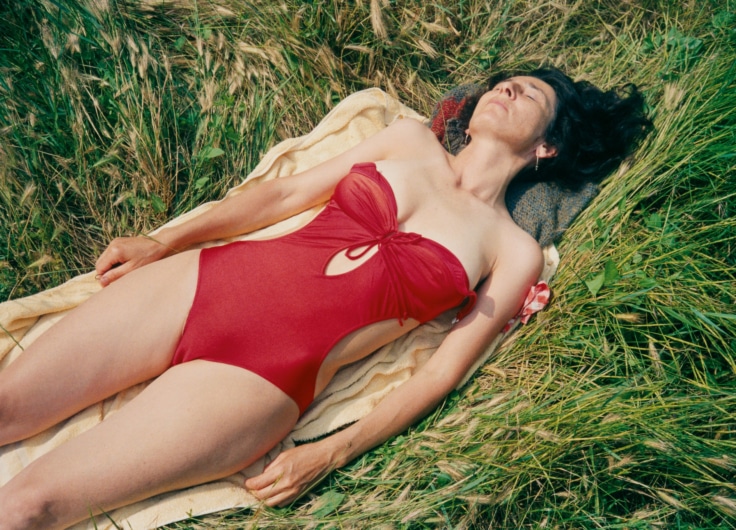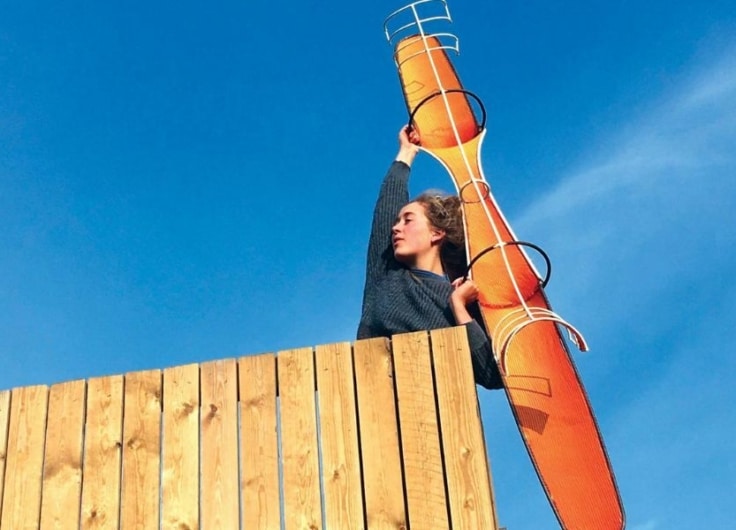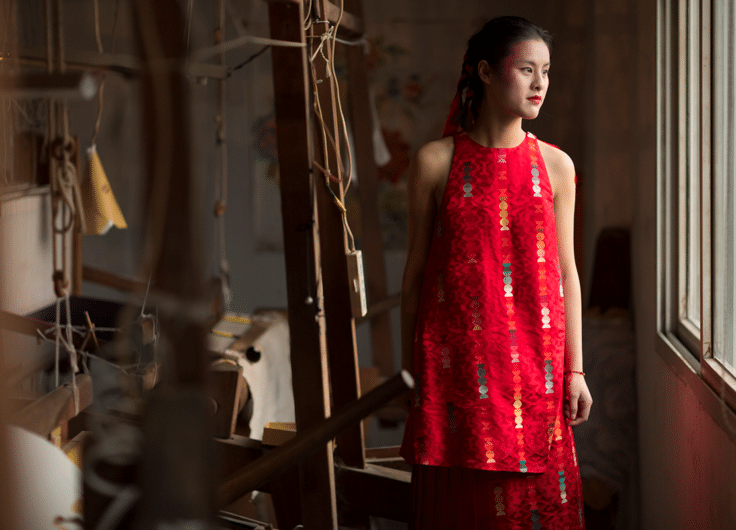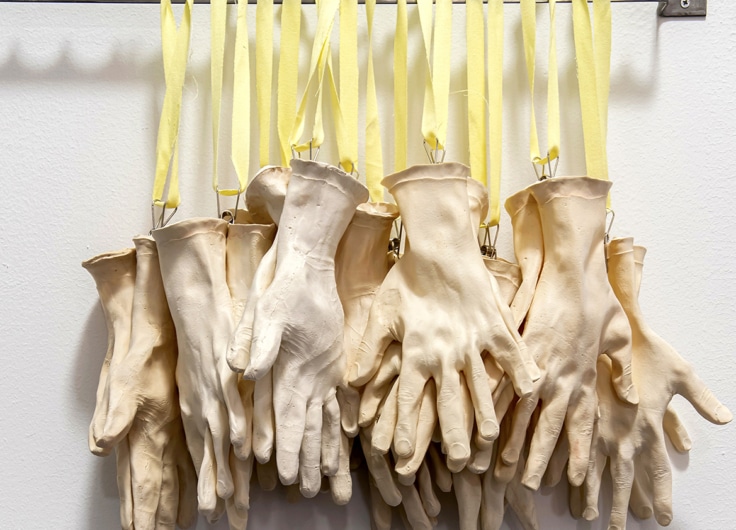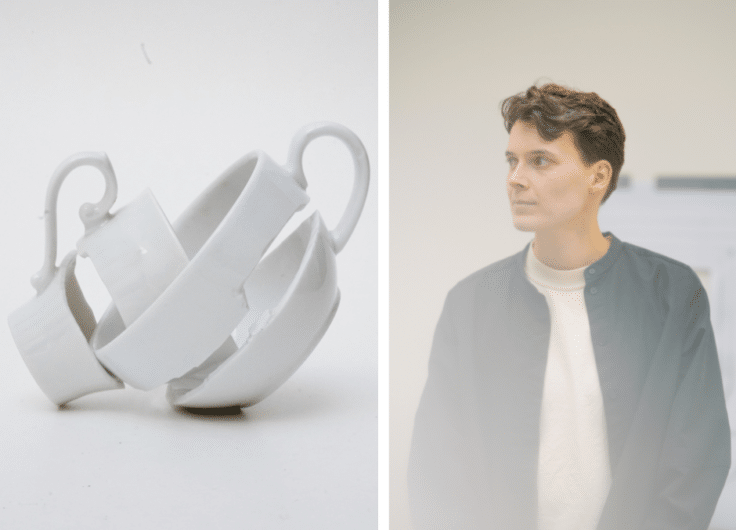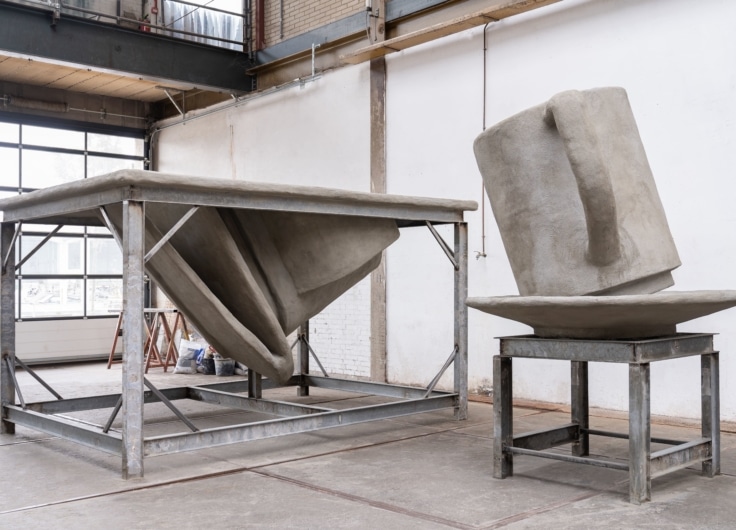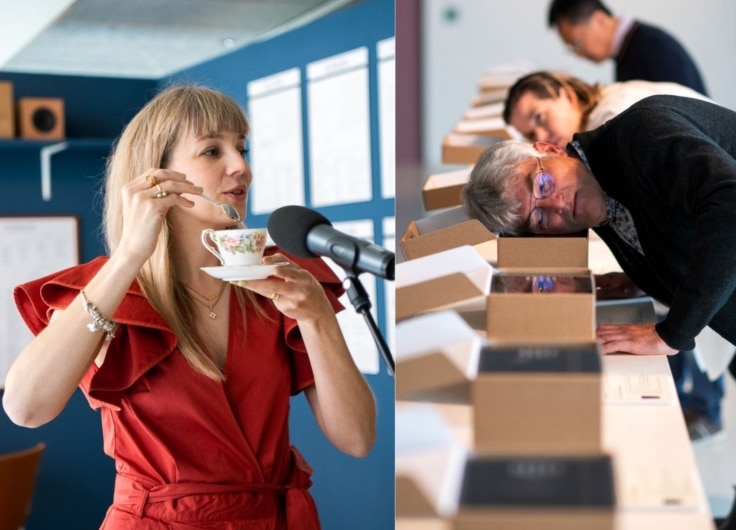Rafaël Rozendaal Bridges The Gap Between The Online And Offline World
With an oeuvre at once connected to art history and contemporary technology, Rafaël Rozendaal has made a name for himself as a prominent digital artist. His works often also take physical form, raising exciting questions about the relations between the online and offline world.
How do you represent a horizon in the simplest way? It doesn’t seem like you need much: two horizontal surfaces of colour, the lower one a much thinner slice than the one above. And yet that’s not quite the case. The Dutch-Brazilian artist Rafaël Rozendaal (b. 1980) has tried all kinds of colour combinations and arrived at the observation that, for example, green above purple does not form a landscape, and by consequence, does not produce a horizon. A horizon does appear, though, with the juxtaposition of roughly blue colour above green.
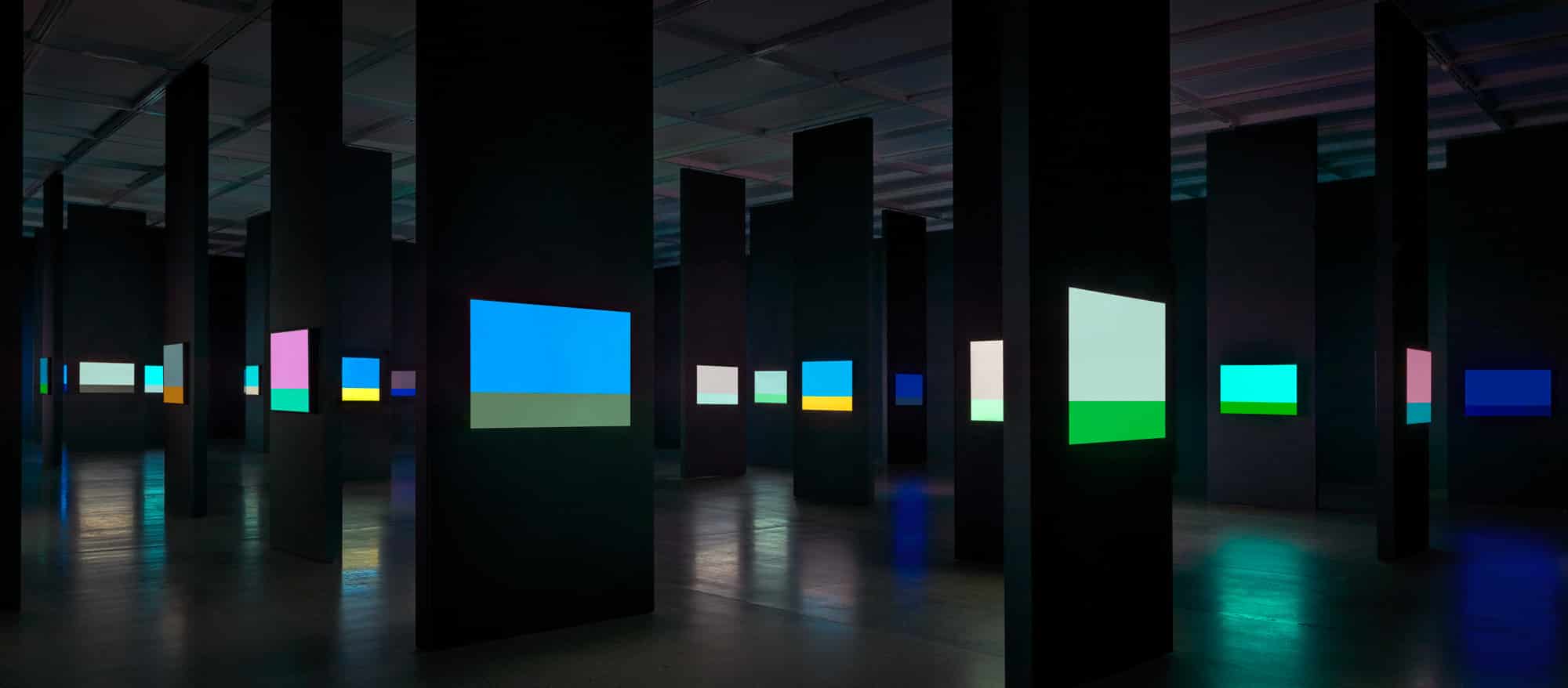 81 Horizons, Museum Folkwang, Essen, 2023
81 Horizons, Museum Folkwang, Essen, 2023© G.-J. van Rooij
Rozendaal’s research forms the basis of his series 81 Horizons (2021). But what kind of artwork is this really? Online it takes the form of NFT’s (more on this later), that you can discover on his website. In 2023, there was an installation form of the eye-catcher Color, Code, Communication in the Museum Folkwang in Essen, Germany, Rozendaal’s largest exhibition until then. In one of the halls, you could see the 81 horizons on the same number of screens. And should you wish to take the series home with you? Then you could pick up the eponymous book or silkscreen print in the Museum shop.
This variety of forms is a strong example of how Rozendaal conceives of his work: namely as a whole set of instructions that come to life in all sorts of different media.
Suitable for every screen
Since 1999, Rozendaal has made animated artworks in the form of websites. One of the motivating factors behind this was the generational gap that he experienced himself with regard to the museum world: the atmosphere of museums was solemn and the decision-making processes were considerably slower.
Rozendaal occasionally compared it to starting a band as a sixteen-year-old. Your audience is then usually the same age. For young artists, though, that’s rather less the case, and so they tend to establish their own art initiative or publication to reach a young public. For Rozendaal, this was building websites. For him, this was the ideal way to show his work in a much more direct manner, and furthermore, to a like-minded audience.
And yet everybody experiences those websites in a slightly different way. In the code for the moving images there is a little built-in randomness and the disparate browsers vary from each other, just as the screens they display on do. By stylising these often-colourful animations, they can be stretched or shrunk at will.
Meanwhile, there is a host of other media platforms that each demand their own version of the work and by consequence shape the viewer’s experience of them: smartphones, tablets, smart TVs, and large projection screens in, among others, museums. By his own admission, Rozendaal was delighted to be able to use a wide variety of means of display in Museum Folkwang: from projection directly onto the wall to a large wall full of video screens.
Material and personality
Since 2012, Rozendaal has also applied himself to offline objects. And here, too, the colourful, ‘stretchable’ language of his websites is clear to see. For his first physical works, he used the so-called ‘lenticular printing’ method: a printed image that changes depending on the viewer’s perspective. The technique is often found used in Pogs, mouse mats and other promotional materials. In this technique, Rozendaal saw an opportunity to translate his digital animations into a physical medium.
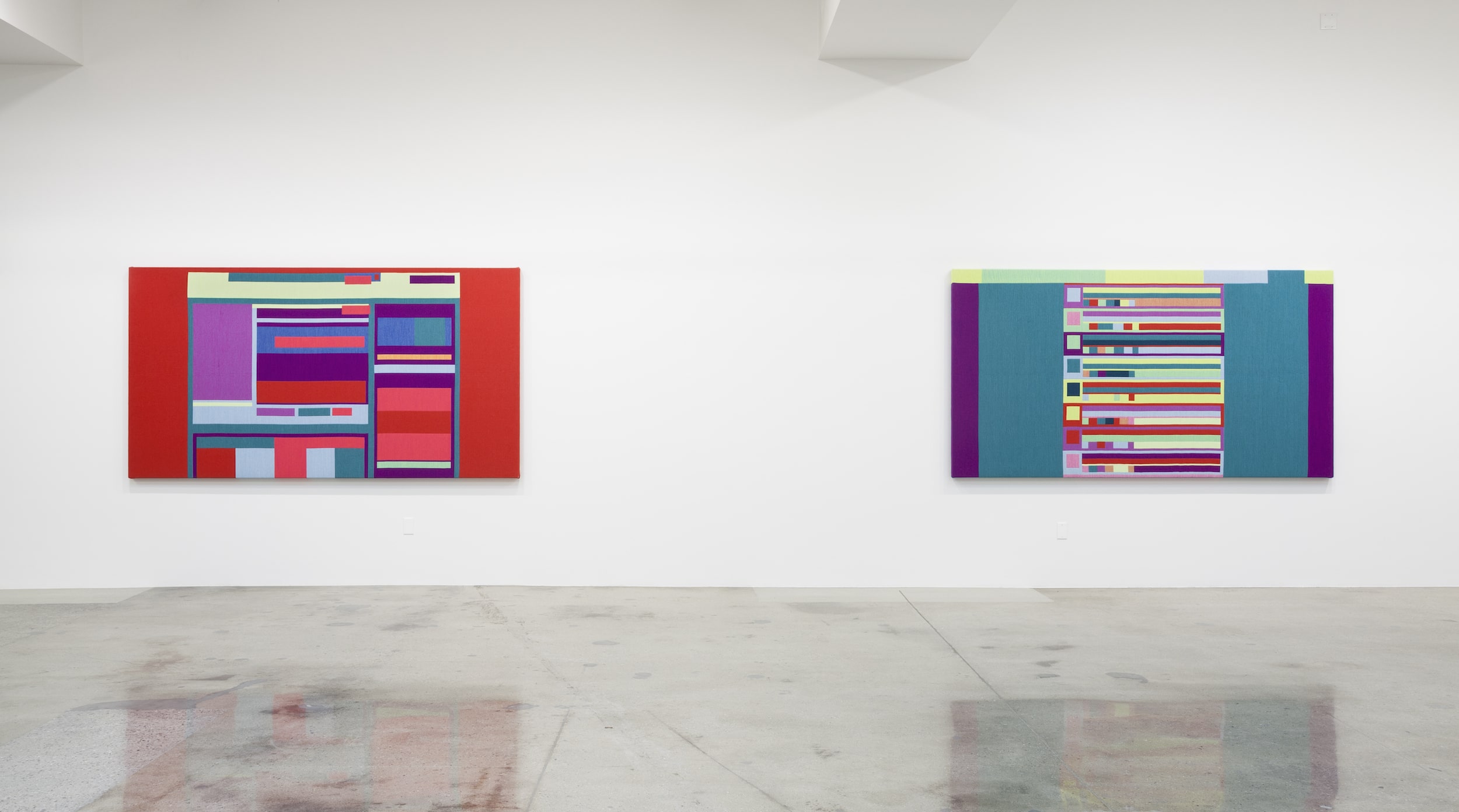 Textile works from the Abstract Browsing series exhibited at the Steve Turner Gallery in Los Angeles, 2016
Textile works from the Abstract Browsing series exhibited at the Steve Turner Gallery in Los Angeles, 2016© D. Lewis
However, to begin with, he still felt a certain resistance to physical objects and wanted, in his own words, to keep his art ‘pure’, but he nevertheless made the switch. Later, he also started to work with materials including textiles and broken mirrors. Rozendaal is interested in the physical aspects of these materials because they afford different possibilities to a flat display or screen. Of course, digital works also offer their own opportunities, and this allows, excitingly, for different versions of artworks to exist side-by-side.
Rozendaal notes that he does not see art as the meeting of a personality and materials. He has no control over his personality and therefore just as little control over his inspiration. He prefers simply to constantly make new things, without worrying about the meanings that a viewer will give the work. As long as that viewer feels a connection to his work, then that is enough for Rozendaal.
Reduction and stylization
And yet Rozendaal’s ideas do not come from nowhere. Two things are particularly noticeable in his work: on the one hand, evidence of many hours of museum visits, and on the other his interest in, among others, (computer) animation and his enthusiasm for new technology. To begin with the latter, Rozendaal remarks that technology reduces reality, as in digital image compression. Abstraction really works in a similar way: you make choices regarding which details to show and which to leave out.
Many of Rozendaal’s artworks have to do with the way in which humans reduce and stylize the world around them. As an example, he points to animation films and video games. When they were first invented, they were not yet very sophisticated. You simply could not accurately represent the world in them. There was a great deal of creativity required to cope with the limitations of the time, and this gave rise to a remarkable visual language. Rozendaal singles out Mickey Mouse as an example: he has not four but three fingers and a thumb, to save precious time during animation.
Available to the public
81 Horizons is a good example of how technology can put its stamp on visual language. The series began as a collection of NFTs. For the reader not familiar with this term, NFT is an acronym for a non-fungible token, perhaps most simply characterised as a unique certificate of ownership. This technology makes it possible to be the sole owner of something that, in principle, exists only online. What do the first Tweet in history and the popular YouTube video Charlie Bit My Finger have in common? They’ve both been sold as NFTs.
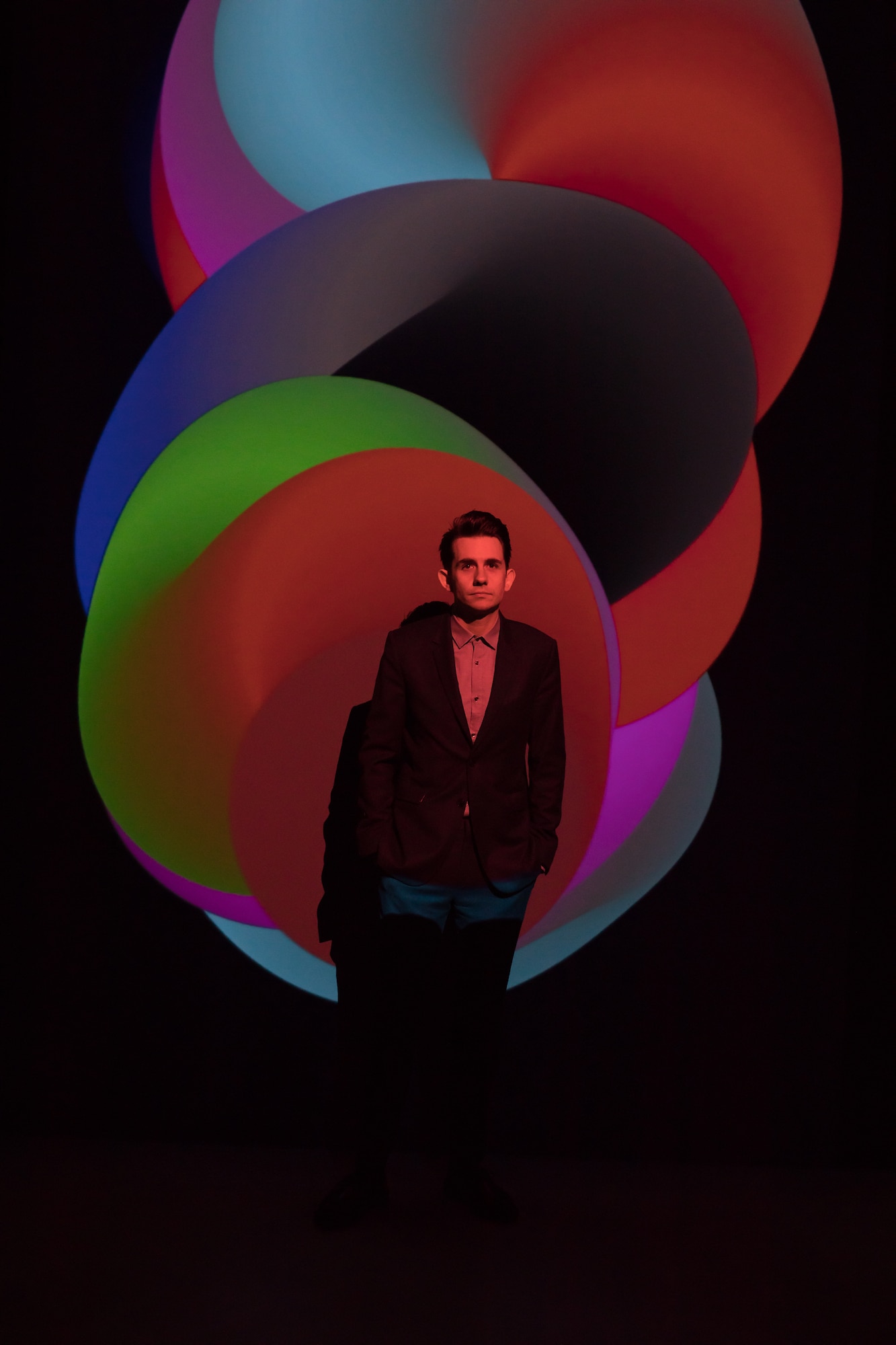 Rafaël Rozendaal
Rafaël Rozendaal© K. Oyamada
This by no means implies that the work is no longer publicly available, but rather the contrary. The certificate of ownership is stored in the blockchain: a public database. You can store the entire artwork in it, though it pays to be economical in this regard; all of the data written to the blockchain costs money. But in its entirety, 81 Horizons
consists of a mere 9 kilobytes. By comparison: the average email is about a hundred times that size. In a number of ways, then, these artworks constitute the simplest way to represent a landscape.
Working colour combinations
In 81 Horizons
you can still hear the echoes of centuries of landscape art. Rozendaal is fascinated by the way that art can function as a kind of silent dialogue through the ages. In the Museum Folkwang
exhibition, an installation version of Homage
(2022) was on display, positioned between the great names of abstract art including Piet Mondrian, Barnett Newman, Frank Stella, and Josef Albers. The tradition of abstract painting is closely connected with the invisible, like music, ideas about spirituality, and specific theories. This is why an abstract painting can often be interpreted as the representation of something that exists on another level. Isn’t the digital world just the same?
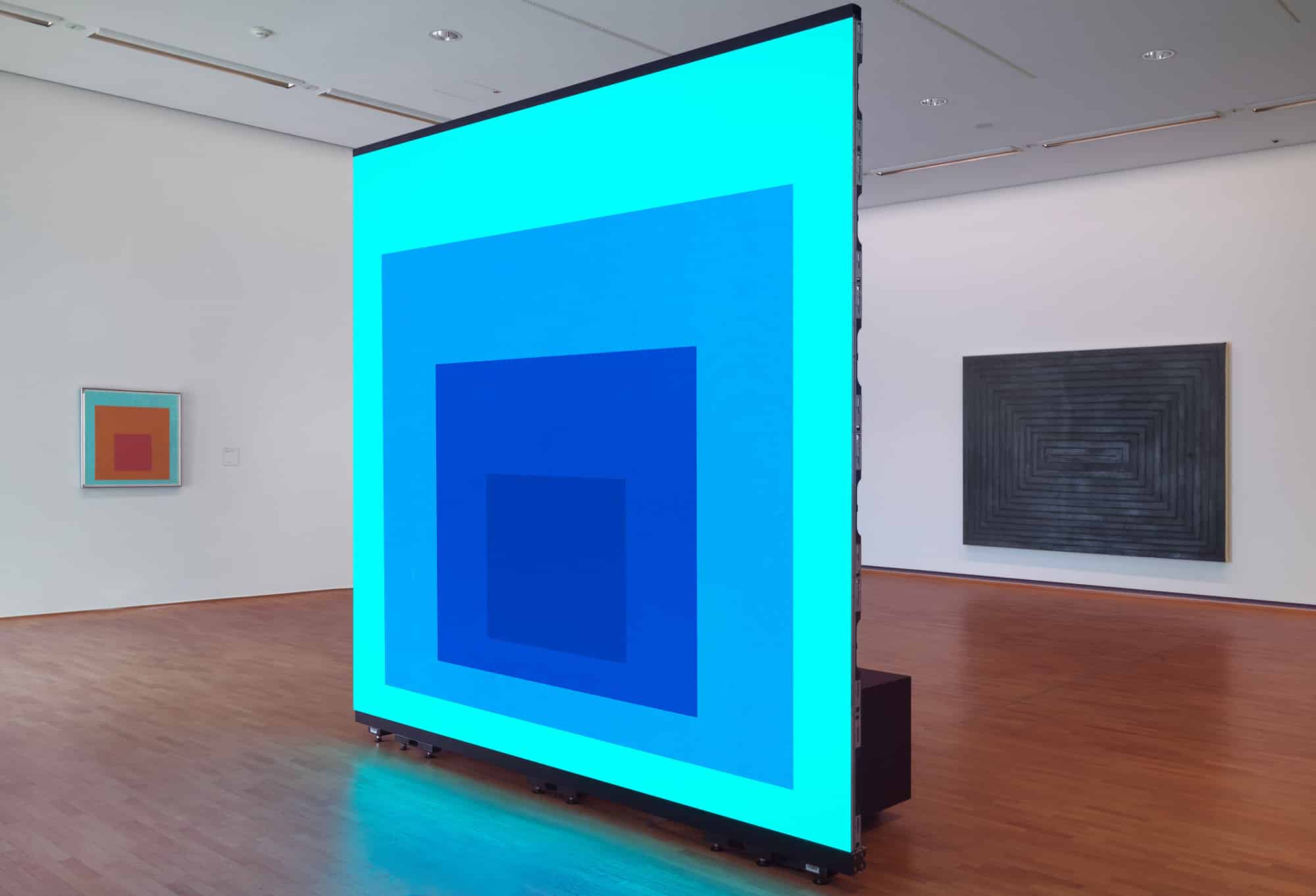 Homage, Museum Folkwang, Essen, 2023. On the left is a painting by Josef Albers and on the right a work by Frank Stella.
Homage, Museum Folkwang, Essen, 2023. On the left is a painting by Josef Albers and on the right a work by Frank Stella.© G.-J. van Rooij
The oeuvre of the German-American artist Josef Albers was the direct source of inspiration for Rozendaal’s Homage and is worth a brief digression. Albers made hundreds of paintings with the name Homage to the Square (from 1949 until his death in 1976). On square surfaces, he explored the way in which different colours interact with one another. When you see numerous of these paintings, it becomes clear that they’re painting with great precision. They appear on the surface to display relatively little personal expression. But due to the serial intent of the works, you nevertheless instantly sense Albers’ studio explorations: multiple possibilities tested and worked intensely.
The human hand and progress
Rozendaal’s body of work betrays a similar exploratory spirit, partly because he also often works in terms of series. His Homage also emerged from a certain curiosity: what would happen if you added movement to Albers’ series? Rozendaal chose the more than a hundred colour combinations that make up the animation himself. As he explains, if you let the computer choose the colours, you end up with an ‘average palette’ dominated by muddy grey and brown. In other words, the human choice is quite a bit more interesting.
This reminds us that behind every daily use of technology, there are hidden human programmers and developers, albeit anonymous ones. And it is these anonymous technologists that, at the end of the day, ensure that Rozendaal’s oeuvre, in contrast to his physical works, will continue to gain strength. To preserve a physical object like a painting in its optimal condition is an extremely difficult task; the dulling of paint is a barely avoidable phenomenon. Albers’ colours – and the experience that the contemporary viewer had observing them – were once significantly more intense. Rozendaal’s digital artworks, by contrast, can only gain in intensity, provided that the technology continues to advance. Rozendaal is enthusiastic about the advancements in picture quality of screens and displays in recent years. The colours of his digital art have never looked as clear and bright as they do today.


